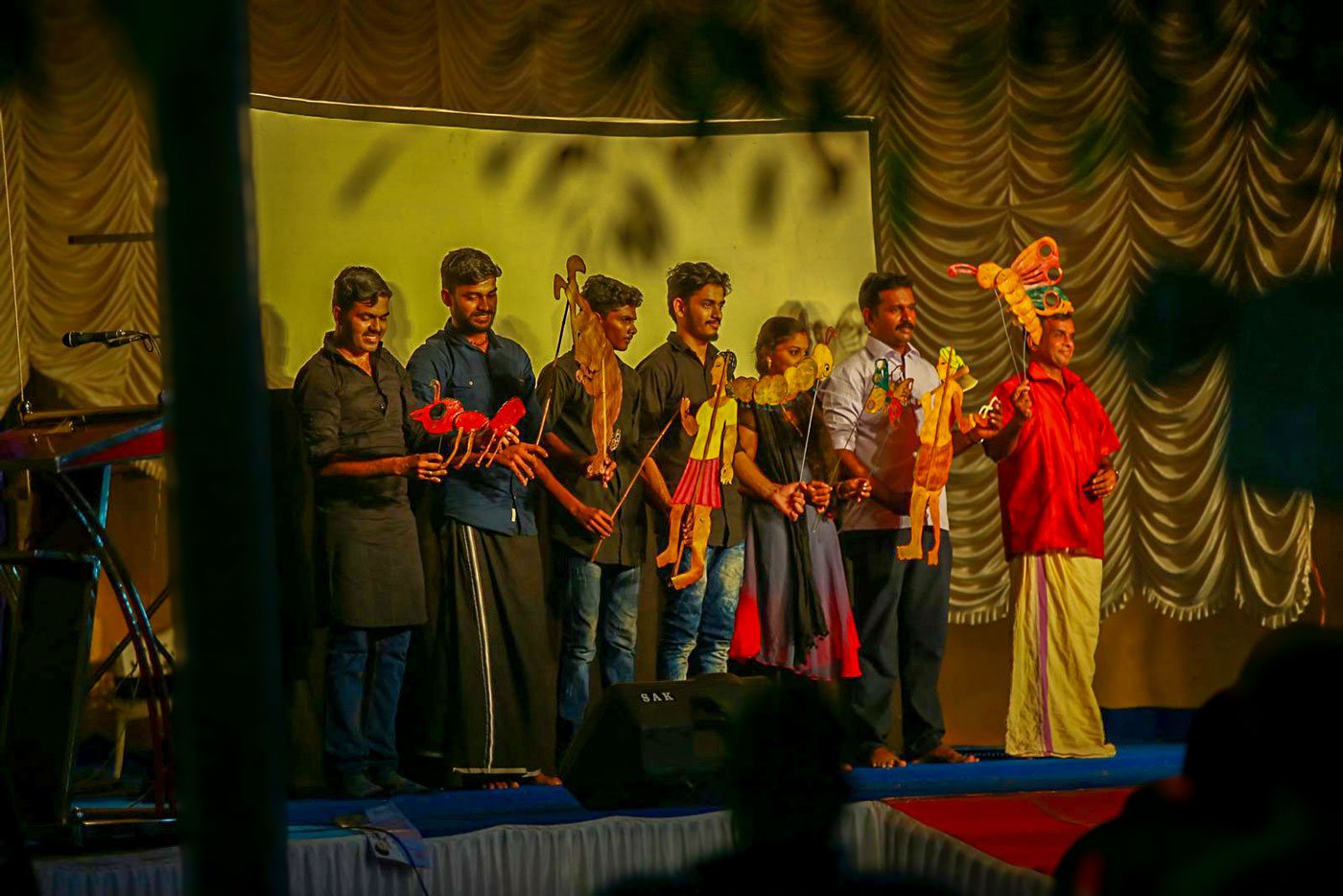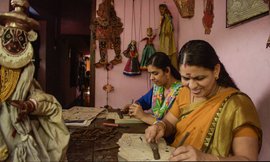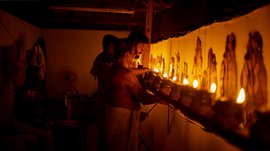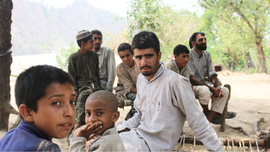A young man dashes behind the screen, making it just in time to ensure that the diya doesn’t go out. He has to do this multiple times during an hour-long performance, all the while making sure not to disturb the equipment and his fellow workers.
All of them are tholpavakoothu puppeteers, artists who perform while invisible to their audience.
The puppeteers are moving constantly on the other side of this white cotton screen, leather puppets in hand. Near their feet lie about 50-60 other puppets, ready to be used on cue. A story is being narrated through the speakers, and shown through the shadows.
The nature of this art is such that the real performance goes unnoticed. So when puppeteer Ramachandra Pulavar was awarded a Padma Shri – the fourth-highest civilian award in the country – in 2021, it was a cause for celebration and a time for acknowledgement. In his speech, the tholpavakoothu artist said, “this recognition… credits the collective effort made by the entire troupe over the years to ensure the survival of this puppet theatre.”
The success of Pulavar and his troupe has, however, come at a price. Both critics and devotees have accused them of turning the art into a business. Ramachandra is not too concerned about the criticism. “It has to be a business for us to eat and survive,” he says. “If actors and dancers can charge money for what they do, why can't puppeteers do the same?”
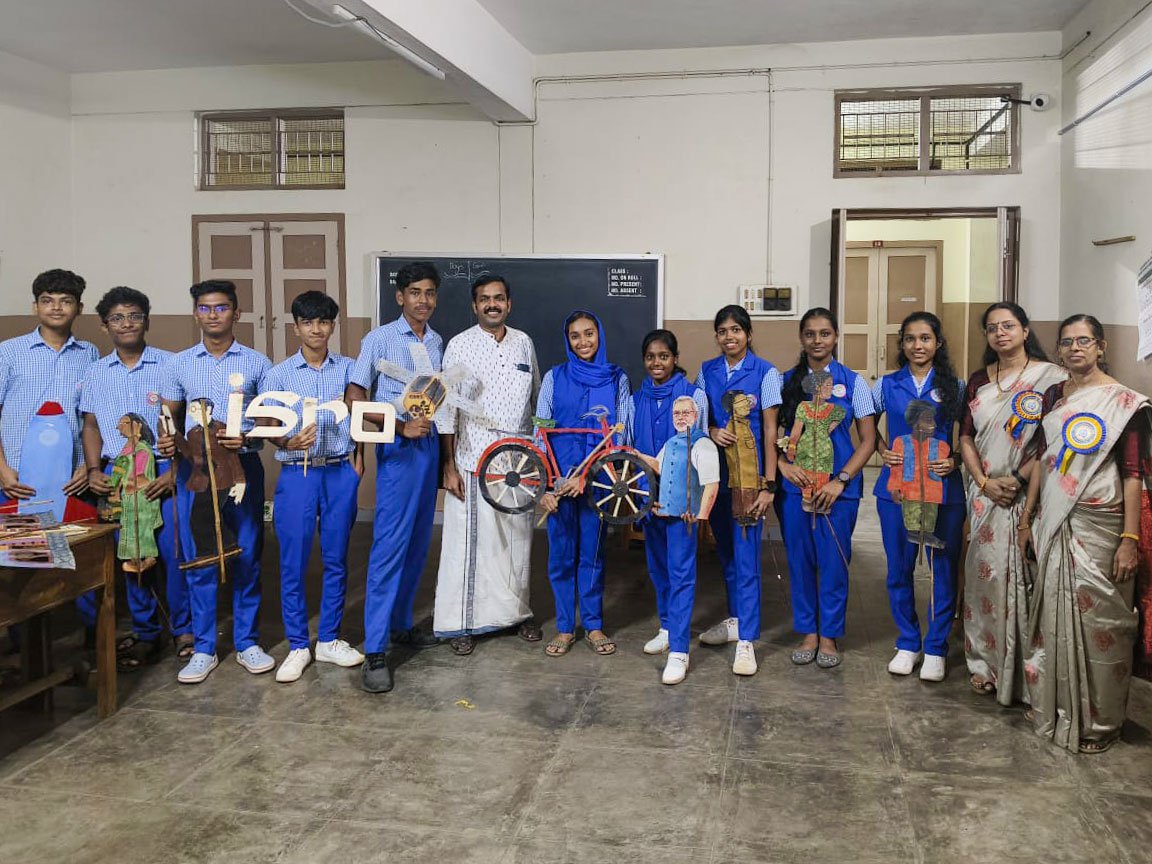
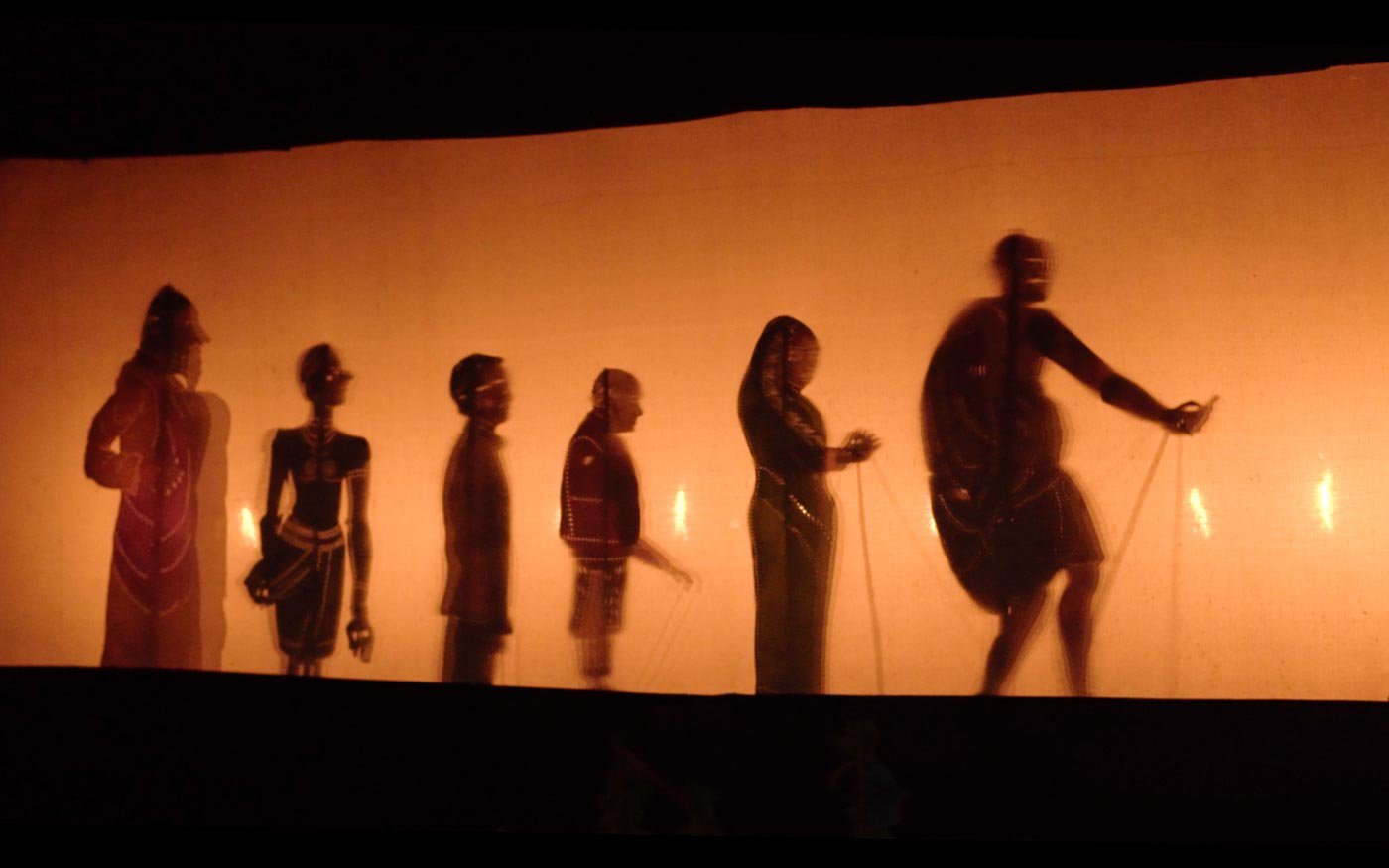
Left: A tholpavakoothu performance on the Indian space mission. It was performed by Ramachandra's troupe for a school's annual programme. Right: The story of Gandhi told in shadow puppetry
Tholpavakoothu was traditionally performed only within temple premises and during the harvest festival in Kerala. But in the last 20 years, 63-year-old Ramachandra and his team at the Kavalappara Puppetry Troupe in Palakkad district, have made great efforts to ensure the continuity of tholpavakoothu in a modern space. Today, the art of shadow puppet theatre has undergone a lot of changes and experimentations with style. See more of the traditional festival performance in Tholpavakoothu puppetry is for everyone .
It was Ramachandra’s father, Krishnankutty Pulavar, who made the decision to bring tholpavakoothu to the outside world. Plays have moved beyond reciting Hindu epics like the Ramayana to depict a wider range of stories. Mahatma Gandhi’s story in Kerala’s traditional puppetry style was first performed at Edappal in October 2004. Since then, it has been staged more than 220 times.
The excellent reception of this play opened new avenues for the Kavalappara troupe. They started developing screenplays, designing puppet sketches to create puppets, mastering manipulation techniques, delivering narrations, composing and recording songs in the studio. The team has gone on to create scripts for a variety of stories covering the birth of Jesus Christ, Mahabali, Panchatantram, and so on.
Puppeteers at Kavalappara also brought social awareness through stories such as ‘Chandalabhikshuki’ – a poem by Kumaranashan that displays the spiritual influence of the Buddha. Subsequently, from the 2000s onward, it has been a platform for promoting awareness of crucial issues – raising awareness about HIV, addressing deforestation, and contributing to election campaigns in the same year. The puppeteers also worked with diverse art forms and artists, producing fusion performances.
A documentary on the story of innovation, perseverance, and the enduring spirit of tholpavakoothu in today’s world.
This story is supported by a fellowship from Mrinalini Mukherjee Foundation (MMF).
